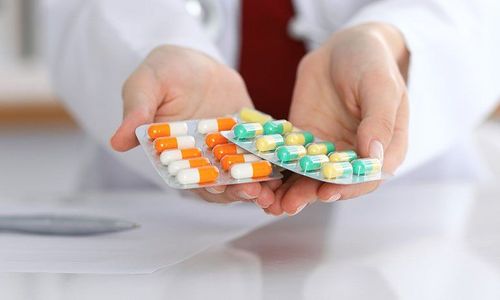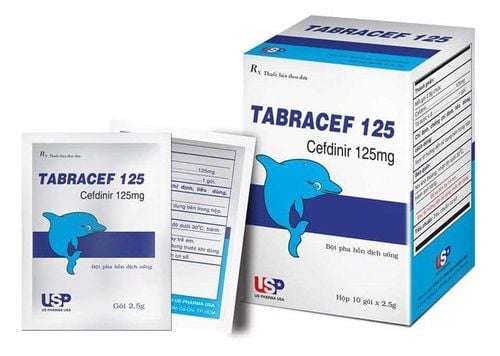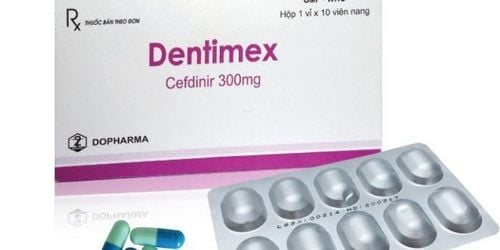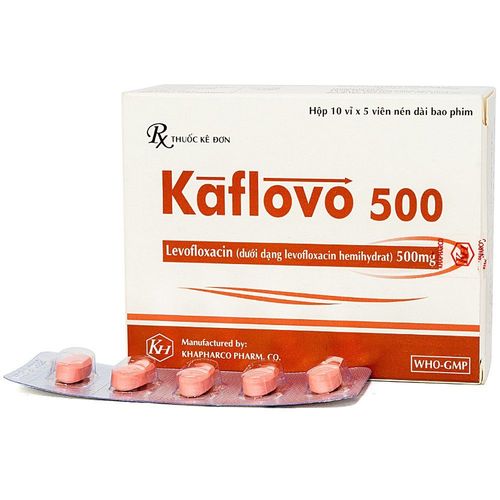This is an automatically translated article.
Levogolds 750mg medicine has the main ingredient Levofloxacin hemihydrate. Effective in the treatment of infections caused by susceptible bacteria. So, what does Levogolds do? What precautions should be taken when using this drug? Let's find out the necessary information about Levogolds 750mg drug through the article below.
1. What is Levogolds 750mg drug?
Manufacturer: ACS Dobfar info SA, Switzerland.
Packing: Aluminum bag contains 1 PVC infusion bag containing 150 ml of intravenous solution.
Dosage form: Solution for intravenous infusion.
Ingredients: Each 150ml bag contains:
Levofloxacin hemihydrate equivalent to Levofloxacin 750mg. Excipients: Glucose monohydrate 8250mg, hydrochloric acid and/or sodium hydroxide just enough for pH adjustment, water for injection just enough 150ml.
2. Uses of Levogolds 750mg
Effects of Levofloxacin
Is a synthetic antibiotic belonging to the Fluoroquinolone group, with a broad antibacterial spectrum. Bactericidal action by inhibiting the enzyme Topoisomerase II and/or topoisomerase IV (the enzyme essential for catalyzing the processes of replication, transcription and even repair of bacterial DNA). Spectrum of action:
*Sensitive in vitro and clinical infections:
+ Gram-negative aerobic bacteria: E. cloacae, L. pneumophila, M. catarralis, P. mirabilis, P. aeruginosa, E . coli, H. influenza, H. parainfluenza, K. pneumonie.
+ Other bacteria: C. pneumoniae, M. pneumoniae.
+ Gram-positive aerobic bacteria: B. anthracis, methicillin-sensitive S. aureus, S.pneumoniae, methicillin-sensitive coagulase-free Staphylococcus.
+ Anaerobic bacteria: Peptostreptococcus, Fusobacterium, Propionibacterium.
In vitro susceptible bacteria:
+ Gram-positive aerobic bacteria: E. faecalis.
+ Anaerobic bacteria: B. fragilis, Prevotella.
Levofloxacin-resistant bacteria:
+ Gram-positive aerobic bacteria: E. faecium, methicillin-resistant S. aureus, methicillin-resistant coagulase-free Staphylococcus.
Cross-resistance occurs with other fluoroquinolones, but rarely occurs with other groups of antibiotics because of different mechanisms of action.
2.1 Indications Levogolds 750mg is used for infections caused by susceptible bacteria in the following cases:
Community-acquired pneumonia. Acute sinusitis. Acute exacerbation of chronic bronchitis. Prostatitis . Urinary tract infections with/uncomplicated. Uncomplicated skin and soft tissue infections. Anthrax disease. 2.2 How to use - Dosage How to use:
Use slow intravenous infusion. If the infusion is rapid, there is a risk of hypotension. Not for intramuscular, peritoneal, subcutaneous, or spinal injection.
The infusion time depends on the dose of the drug:
+ 250 mg or 500 mg usually infusion over 60 minutes.
+ 750 mg infused over 90 minutes.
The drug has a concentration of 5 mg/ml in Glucose 5%, used immediately without dilution. The portion that does not run out in time must be discarded. Do not mix with Heparin or alkaline solutions (such as sodium hydrogen carbonate). The drug is compatible with the following solutions for infusion: + Sodium chloride 0.9%.
+ Dextrose 5% and 2.5% in Ringer.
+ Nutrient solution for infusion (such as amino acids, carbohydrates, electrolytes).
Dosage:
As directed by the doctor or refer to the dose as follows:
Adults:
Respiratory infections: + Acute exacerbations of chronic bronchitis: 500mg/time/day for 7 days.
+ Community-acquired pneumonia: 500 mg/time x 1-2 times/day for 7-14 days.
+ Acute maxillary sinusitis: 500 mg/time/day for 10-14 days
Skin and subcutaneous infections: + Complicated: 750mg/time/day for 7-14 days
+ No complications : 500mg/time/day for 7-10 days
Urinary tract infections: + Complicated: 250mg/time/day for 10 days.
+ No complications: 250mg/time/day for 3 days.
Nephritis - acute pyelonephritis: 250mg/time/day for 10 days. Anthrax: 500 mg/time/day, for 8 weeks. Then switch to oral administration if possible. Prostatitis: 500 mg/24 hours, intravenous infusion. After a few days can switch to oral form. Patients with renal impairment: Renal failure with the following creatinine clearance: Uncomplicated urinary tract infections, acute pyelonephritis: Initial dose 250mg. + From 20 to over: Maintenance dose of 250mg every 24 hours.
+ From 10-19: Maintenance dose of 250mg every 48 hours.
Other indications: Initial dose 500mg. + From 50-80: Maintenance dose of 250mg every 24 hours.
+ From 20-10, hemodialysis, continuous peritoneal dialysis: Maintenance dose of 125mg every 24 hours.
Hepatic impairment, the elderly: No dose adjustment is required. Children under 18 years old: Do not use.
2.3 How to handle missed dose, overdose Missed dose : Performed by medical staff to avoid missed dose.
Overdose:
+ Symptoms on the central nervous system such as cognitive disturbances, convulsions, dizziness, prolongation of the QT interval.
+ If serious side effects appear, immediately notify the doctor for timely treatment. Symptomatic treatment, adequate fluid resuscitation and ECG monitoring are required.
3. Side effects of Levogolds 750mg
Drug interactions to note when using drugs are:
Common:
+ Nausea, diarrhea, increased liver enzymes, headache, insomnia.
+ Irritation at injection site.
Uncommon:
+ Dizziness, nervousness, agitation, anxiety.
+ Itching, rash.
+ Increased blood Bilirubin.
+ Abdominal pain, flatulence, indigestion, vomiting, constipation.
+ Vaginitis, genital candidiasis.
Rare:
+ Increase or decrease in blood pressure, arrhythmia.
+ Pseudomembranous colitis, tongue edema, dry mouth, gastritis.
+ Joint pain, Achilles tendonitis, muscle weakness, myalgia, osteomyelitis.
+ Seizures, psychosis, abnormal dreams, depression.
+ Quincke's edema, Stevens-Johnson and Lyell syndrome, anaphylaxis.
If you see any side effects, immediately notify a qualified doctor or pharmacist for timely treatment.
4. Notes when using Levogolds 750mg
Contraindications
Levogolds 750mg/150ml should not be used in the following cases:
Hypersensitivity to Quinolones or any ingredients in the formula. Epileptic. Children under 18 years old. Pregnant and lactating women. History of tendon disease caused by a fluoroquinolone. G6PD deficiency. Caution
Use in pregnant women and nursing mothers
Pregnant women : There are no adequate studies in pregnant women. Do not use for pregnant women.
Lactation: Levofloxacin concentrations in breast milk have not been measured, however it can be expected that Levofloxacin is also distributed into breast milk. Because the drug affects the cartilage of joints in young children. Do not breast-feed while using Levofloxacin.
People who drive and operate machinery
Side effects dizziness, dizziness, drowsiness, visual disturbances affect the ability to drive and use machines. Be careful in this case.
Other special note
Tendonitis may occur within 48 hours of dosing. High-risk subjects such as people over 65 years old, are using corticosteroids. The dose should be adjusted according to the glomerular filtration rate. Risk of cartilage degeneration in gravity-bearing joints in many young animals. Not for use by children under 18 years of age. Myasthenia gravis may be more severe, use with caution in people with this condition. CNS side effects have been reported such as increased intracranial pressure, psychosis, CNS excitability leading to convulsions, insomnia, depression, tremor, restlessness, headache, suicidal thoughts, ... when taking antibiotics of the Quinolone group. The drug should be stopped if this symptom occurs. Use with caution in people with neurological diseases. If a hypersensitivity reaction occurs, discontinue the drug as soon as signs appear. Pseudomembranous colitis due to C. difficile has been reported, requiring an accurate diagnosis if diarrhea is present. It is necessary to avoid direct exposure to light during treatment and 48 hours after treatment due to photosensitivity. The drug can cause sugar metabolism disorders that increase or decrease blood sugar in people with diabetes. Drugs that prolong the QT interval on the electrocardiogram should be avoided in patients with pre-existing prolongation of the QT interval, hypokalemia, and taking antiarrhythmic drugs IA, III (quinidine, procainamide, amiodarone...). With caution in patients with prearrhythmia, acute myocardial infarction. Dosage adjustment is required for patients with renal impairment.
5. Drug interactions
Several interactions have been reported, including:
Theophylline : Increased plasma concentrations and AUC Theophylline when coadministered with other quinolones. Warfarin: Increases the effect of this drug, it is necessary to monitor the coagulation parameters. Non-Steroidal Anti-Inflammatory Drugs: Increased CNS excitability and convulsions. Hypoglycemic agents: Increased risk of dysglycemia. To ensure safety and effectiveness, tell your doctor about all medications, health foods you are taking, and other illnesses you have.
Storage :
Temperature below 30 degrees C. Protect from light. Keep out of sight and reach of children. Do not use after the expiry date printed on the package.
Please dial HOTLINE for more information or register for an appointment HERE. Download MyVinmec app to make appointments faster and to manage your bookings easily.













